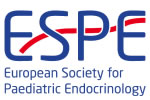ESPE2024 Rapid Free Communications Multisystem Endocrine Disorders (6 abstracts)
Manifestation of PTEN and MUTYH gene mutations: A Case Report
Marc Blinstein 1 , Mark Fradkin 1 , Giedre Rutkauskiene 2 & Ruta Navardauskaite 3
1Lithuanian University of Health Sciences, Medical Academy, Kaunas, Lithuania. 2Lithuanian University of Health Sciences, Medical Academy, Department of Children's Diseases, Kaunas, Lithuania. 3Lithuanian University of Health Sciences, Medical Academy, Department of Endocrinology, Kaunas, Lithuania
Introduction: PTEN hamartoma tumor syndrome (PTHS), a rare genetic disorder, increases the risk of endocrine-related benign and malignant tumors like thyroid, endometrial, breast, and kidney tumors, as well as syndromes like Cowden syndrome (CS), which can cause genodermatosis. The MUTYH gene increases colon cancer risk. Pathogenic MUTYH and PTEN gene variants are autosomal dominantly inherited and 50% likely to pass on.
Case presentation: A female patient (karyotype 46,XX) with a family history of first-degree gastric cancer and third-degree uterine cancer presented with left ovary dysgerminoma and right mature cystic teratoma at age 10. At that age, left oophorectomy and right tumor removal, sparing the right ovary, were followed by chemotherapy. US, CT, and MRI were used to follow up the patient for four years. At 15, the patient had right breast fibroadenoma removed. The cascade prompted hereditary gene testing. PTEN gene heterozygosity was found in NM_000314.6:c. [982dupG]; [982=] (NP_000305.3:p. [Aly328GlyfsTer3]; [Ala328=]). The MUTYH gene also has a heterozygous variant NM_001128425.1:c. [470C>T]; [470=] (NP_001121897.1:p. [Pro157Leu]; [Pro157=]. MRI revealed benign, transparent cystic formations in the right gluteus medius after the gene mutation was found. The patient regularly had pelvic MRIs. Right ovary follicles were functional at 16. Due to the mutation risk, she had a thyroid ultrasound. 0.5 × 0.8 cm isoechoic and 0.8 × 1.3 cm hypoechoic nodes in the left lobe have colloid artifacts.
Discussion: PTEN and MUTYH gene mutations increase cancer and syndrome risk. Cowden syndrome (CS), a rare genetic disorder, causes uncontrolled cell growth via the PI3K/AKT pathway due to germline mutations in the PTEN tumor suppressor gene. Mutations in PTEN, SDHB / D, and KILLIN underexpression cause 92% of CS. Macrocephaly, mucocutaneous lesions, and breast, thyroid, endometrial, and renal cell carcinomas are diagnostic for CS. Inclusion of endometrial and renal cell carcinoma in diagnostic criteria has improved CS family identification
Conclusion: This case emphasises the rarity of mutations in the PTEN and MUTYH genes and the need of a comprehensive genetic assessment in those who have a family history of cancer. These mutations increase the risk of benign and malignant tumors, necessitating proactive imaging surveillance. Additionally, it recommends genetic evaluation for pediatric patients with multiple tumors and screening for breast, endometrial, and ovarian tumors in women with gene mutations.



